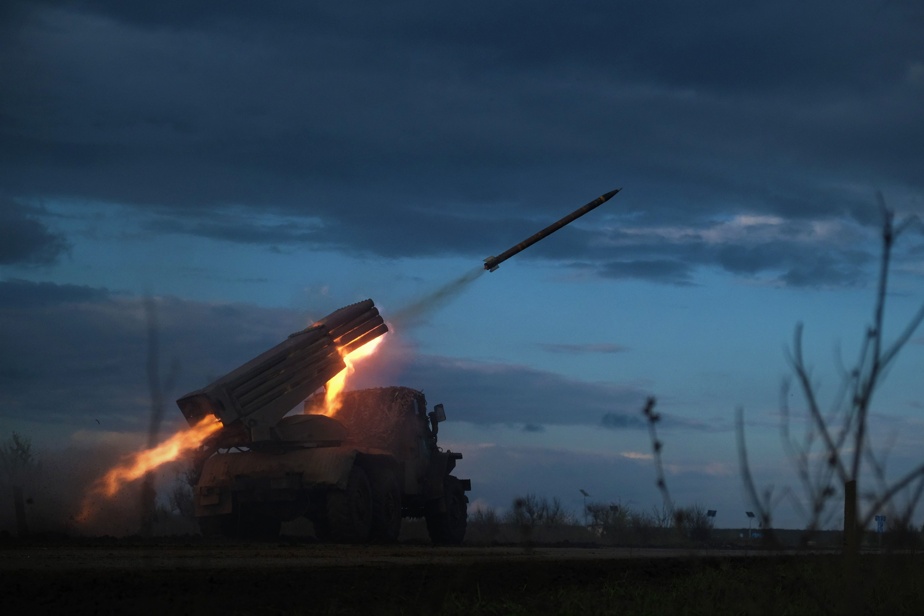(Kyiv) Russian-appointed authorities in Crimea say the military repelled a Ukrainian attack on the port of Sevastopol on Monday, while a drone was also reportedly found in a forest near Moscow ― attacks that come then that Ukraine would prepare for a major counter-offensive.
The head of the Moscow-appointed port city of Sevastopol, Crimea, Mikhail Razvozhayev, said the army destroyed a Ukrainian maritime drone that had tried to attack the port in the early hours of the day. He added that another drone had exploded without causing any damage.
The attack is the latest in a series of attempted strikes on Sevastopol, Crimea’s main naval base, illegally annexed by Russia in 2014.
Ukrainian authorities did not immediately comment on Monday’s attacks. After previous attacks on Sevastopol and other areas, Ukrainian officials avoided openly claiming responsibility, but stressed the country’s right to strike any target in response to Russian aggression.
Russian media also claimed on Monday that an explosive Ukrainian drone had been found in a forest about 30 kilometers east of the Russian capital.
Although not detonated, the incident once again highlighted Ukraine’s ability to reach deep into Russia, as the Ukrainian military reportedly prepares for a spring counteroffensive to recapture occupied areas.
Observers believe that the most likely target of the counter-offensive would be the parts of the Kherson and Zaporizhia regions held by the Russians. If the offensive succeeds, it will allow Ukraine to cut off the land corridor between Russia and Crimea.
According to the Institute for the Study of War, a Washington-based think tank, Ukrainian forces recently gained a foothold near the town of Oleshky, on the eastern bank of the Dnieper, in what could be a preparation for a such operation.
Ukraine has recently received sophisticated weapons from its Western allies and new troops freshly trained in the West, giving rise to growing anticipation of an offensive.
American-made Patriot missiles arrived in Ukraine last week, and military spokesman Yuriy Ihnat told Ukrainian television on Sunday that some of them had already entered service.
Russian forces, meanwhile, have been pushing for nearly nine months to seize the Ukrainian stronghold of Bakhmout in the eastern Donetsk region.
Ukrainian President Volodymyr Zelensky stressed the importance of defending Bakhmut in an interview with The Associated Press last month, saying his downfall could allow Russia to rally international support for a deal which could require Kyiv to make unacceptable compromises.
Both Ukraine and Russia have described the fighting for Bakhmut, the longest battle of the war, as essential to deplete enemy forces and prevent them from launching attacks elsewhere along the 1,000 kilometer front line.
On Monday, Evgeni Prigozhin, the millionaire owner of the Wagner Group military company that led the Russian offensive in Bakhmout, claimed that Ukrainian forces had been pushed back into a two-square-kilometre western section of the city. This claim could not be independently verified.
Russian military bloggers have speculated that a Ukrainian counteroffensive could be accompanied by a series of drone attacks over large areas.
Russian media identified the downed drone near Moscow as a Ukrainian-made UJ-22 Airborne. They said he was found on Sunday by a local resident. According to reports, the drone crashed after running out of fuel or hitting a tree. It was carrying 17 kilograms of explosives.
The UJ-22 is a small reconnaissance drone that can carry about 20 kilograms of explosives and has an autonomous flight range of up to 800 kilometers.
Last month, another drone that authorities suspect came from Ukraine was discovered in Shchelkovo, about 15 kilometers northeast of Moscow, but it was not carrying explosives.
Also in March, a heavy Ukrainian Tu-141 Strizh drone exploded in the town of Kireyevsk, in the Tula region, about 200 kilometers east of Moscow, injuring three people, leaving a large crater and damaging several buildings. The Russian Defense Ministry assured that the drone was shot down by air defenses.
Russian authorities said Ukraine used Soviet-made Tu-141 drones with a range of around 1,000 kilometers to strike facilities in Russia. In December, these drones hit two Russian airbases intended for long-range, nuclear-capable bombers. The Russian Defense Ministry said the drones were shot down, but acknowledged that the debris damaged some planes and killed several servicemen.
In February, authorities also reported that a Ukrainian drone had been found in a forest near Gubastovo in the Kolomna region, about 80 kilometers southeast of Moscow. The drone fell near a major natural gas pumping facility, its apparent target.
Another drone exploded in February in a forest near Kaluga, about 150 kilometers southeast of Moscow, without injuring anyone.
Ukraine’s presidential office said on Monday that at least four civilians had been killed and 13 others injured by the latest Russian attacks in the past 24 hours. Two people were killed in Bakhmout and two others in the southern city of Kherson.

